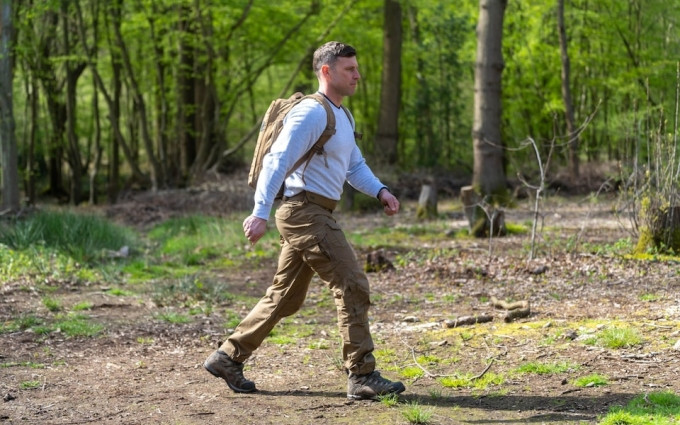Rucking, also known as carrying a heavy object such as a backpack (weight 3-5 kg) while walking, can help burn 1,500 calories an hour.

Farren Morgan, a former royal guard and now military trainer, advises “taking every step as an opportunity to work out.” He says this is a way to get more out of your workout without having to rely on the gym.
Rucking is not only a viral sensation on TikTok with millions of views, but it is also an instinctive physical activity that humans are born to do. You can start your rucking journey by preparing carefully, choosing the right equipment, and ensuring your body is always hydrated. Morgan recommends increasing the weight of your backpack gradually to give your body time to adapt.
Rucking to increase endurance
Morgan says a brisk rucking walk every day will improve your endurance and fitness levels, stimulating both your heart and lungs. To get started, all you need is a good pair of walking shoes, a backpack, and some weight to put in the backpack.
How to do it
Maintain a steady posture: Keep your back straight, shoulders broad, and the weight of the backpack evenly distributed across your back.
Warm up: Walk briskly, keeping a steady pace, enough to get your heart pumping but still allowing you to talk.
Goal: Aim for a moderate distance, 4 to 8 kilometers, that is challenging enough without exhausting yourself.
Rucking to burn calories
According to Morgan, extending your rucking route not only burns a significant amount of calories, but also boosts your metabolic efficiency. At the same time, increasing your step count is key to strengthening your cardiovascular health and reducing the risk of heart-related diseases.
How to do it
Maintaining a pace that is slightly more difficult than comfortable.
Incorporate acceleration intervals to increase intensity.
Aim for a distance of 4 to 6 miles and adjust based on your ability and the difficulty of the terrain.
Rucking to gain strength
Morgan believes that each step on rough terrain is not only a challenge but also an opportunity to strengthen muscles from the legs to the core and upper body. Not only that, rucking also helps strengthen bones, reducing the risk of osteoporosis. Each step on uneven ground is also an exercise for joint stability.
How to do it
Choose difficult terrain such as steep hills and trails with obstacles.
Focus on a steady pace and activating your core, glutes, and legs with each step.
Limit your distance to 2 to 4 miles to focus on building strength rather than endurance.
How much should a rucking backpack weigh?
Morgan recommends starting light, then increasing the weight of your pack as you increase your speed and intensity. “When you feel ready, gradually increase the level, using each step as an opportunity to build strength,” he says, adding that it’s best to carry only 5-10% of your body weight when you first start. For example, a 130-pound person should only carry 6-10 pounds of pack.
Also, people should gradually increase the distance before increasing the weight of their backpack. It can be as simple as starting with 2 km, once a week, then gradually increasing both the distance and frequency.
Morgan recommends military backpacks because they are durable, heavy-duty, and have adjustable straps that help maintain comfort throughout your journey. Weight down your backpack with books, water bottles, etc. Use clothing or towels to keep it from shifting around. These items will also come in handy when you get to your destination.
Finally, you should consult your doctor to see if it is suitable for your health condition.
TB (according to VnExpress)